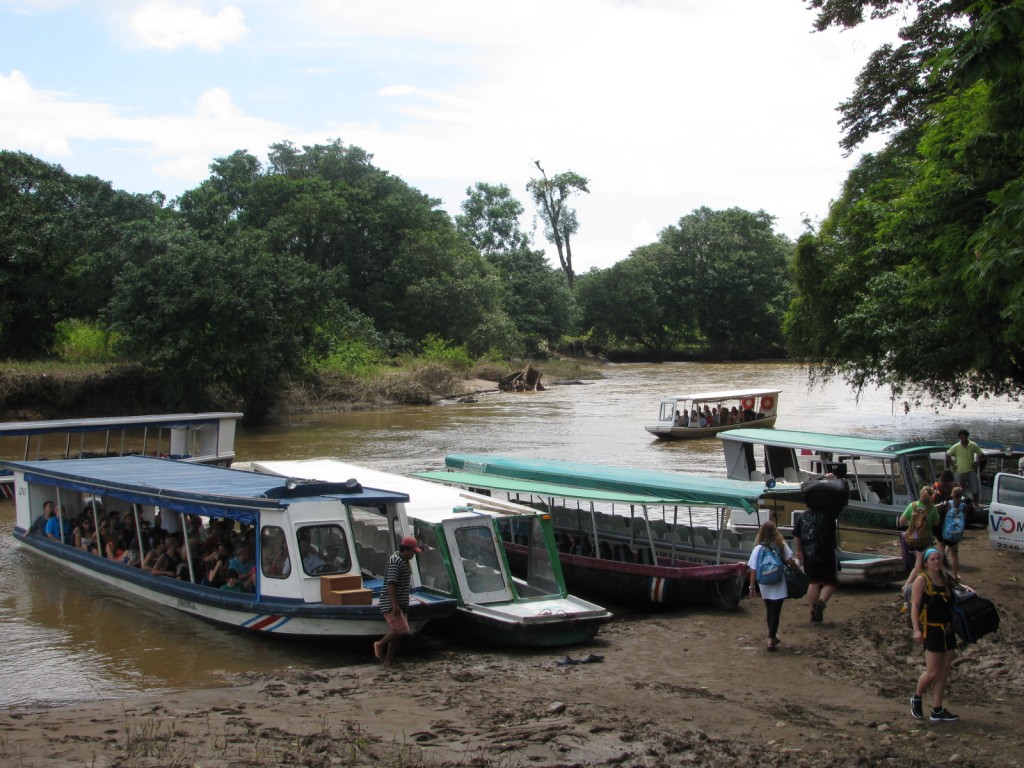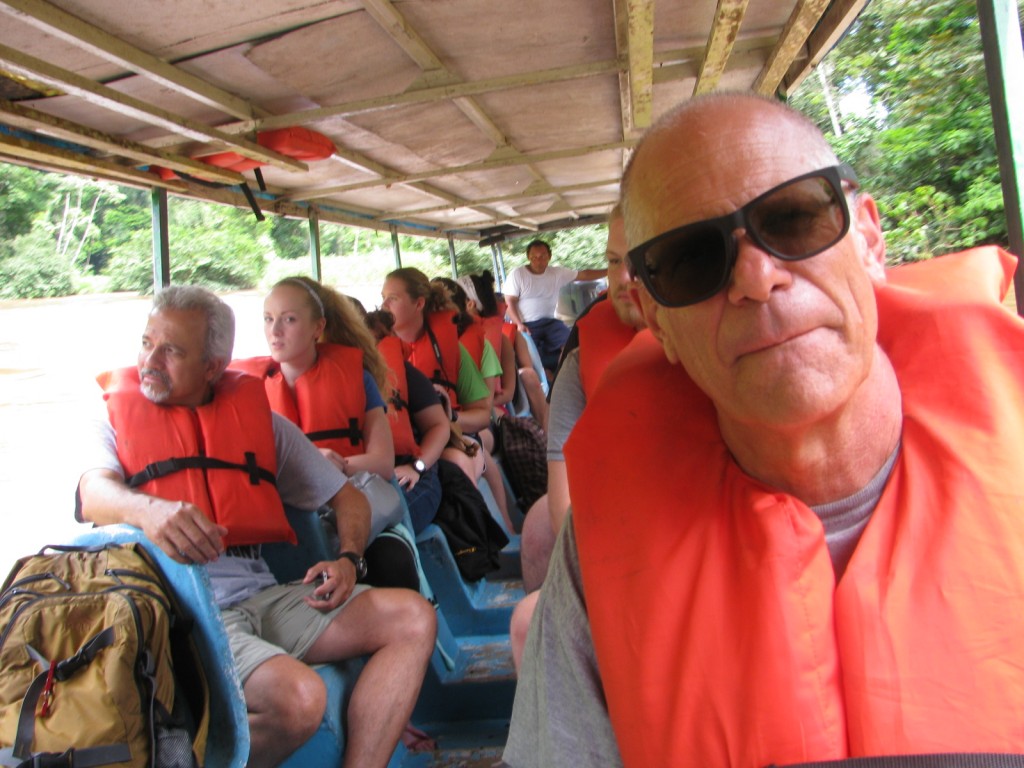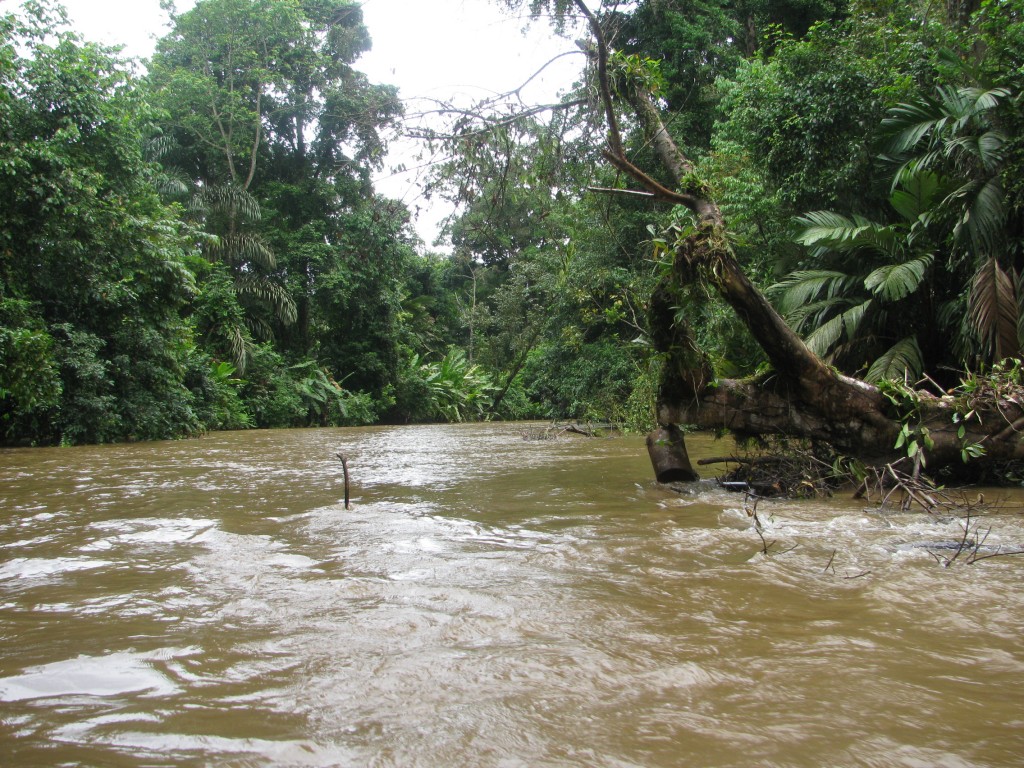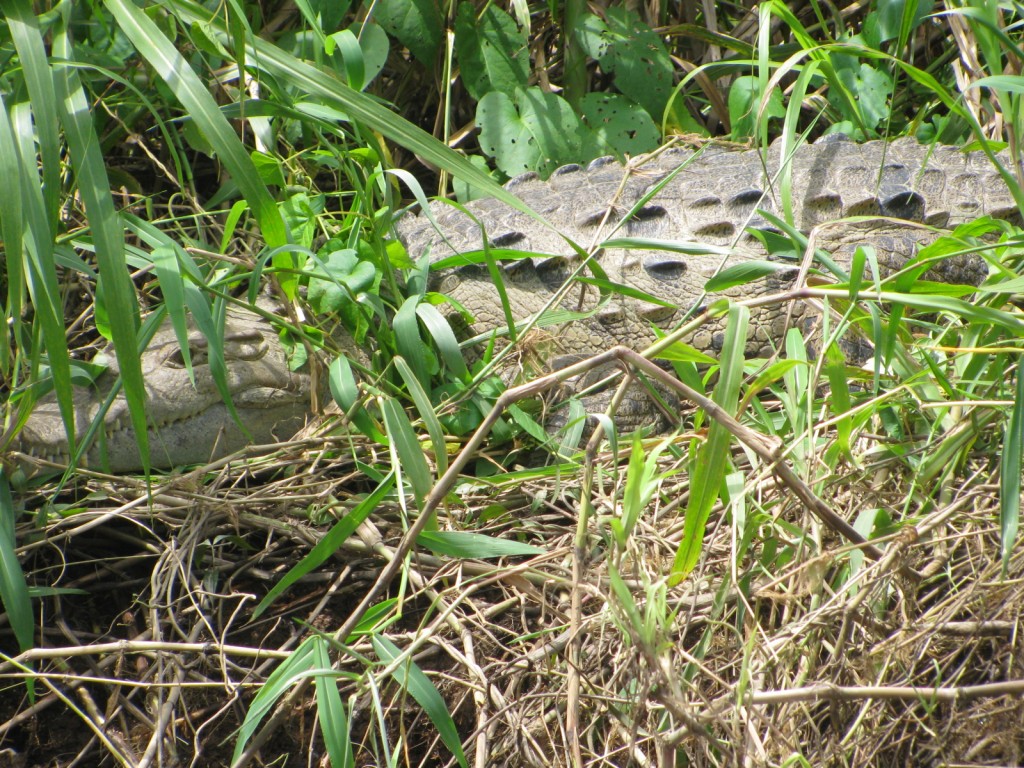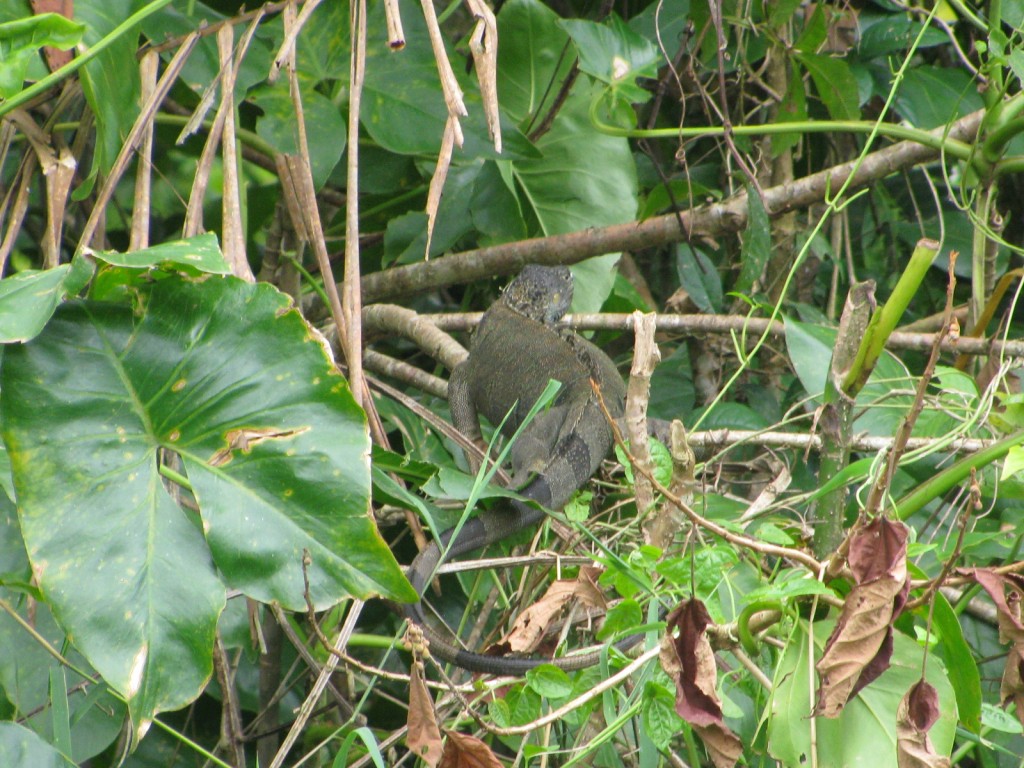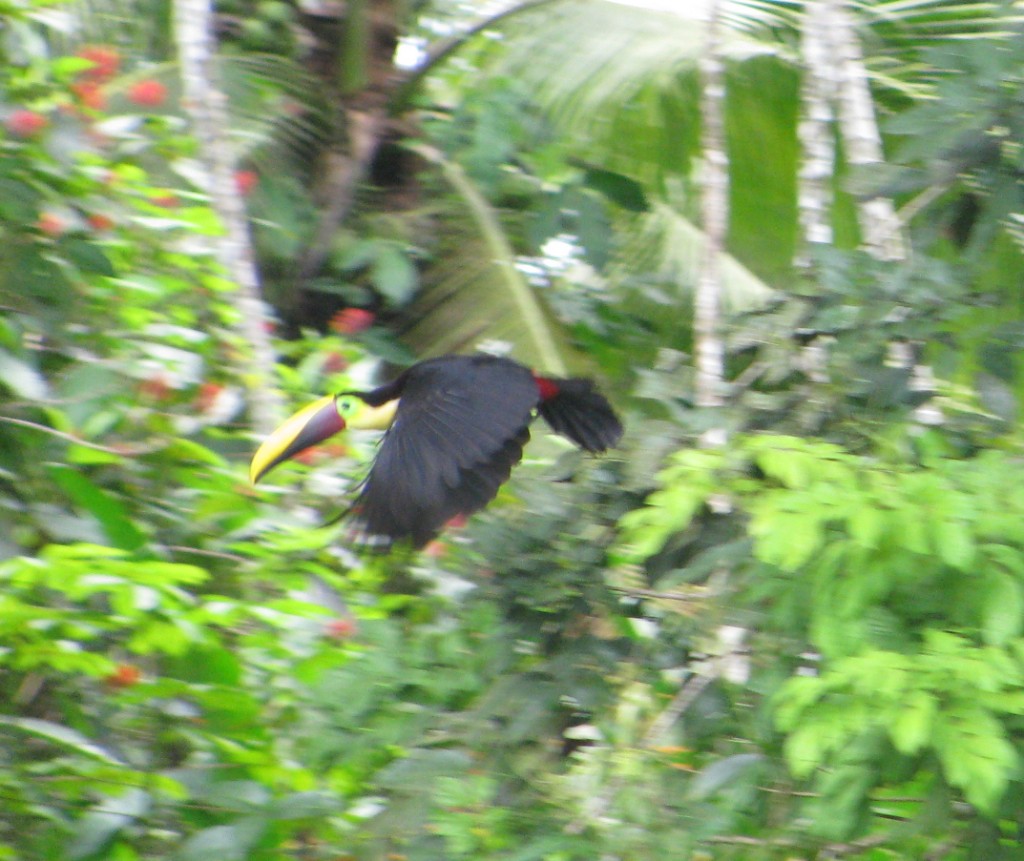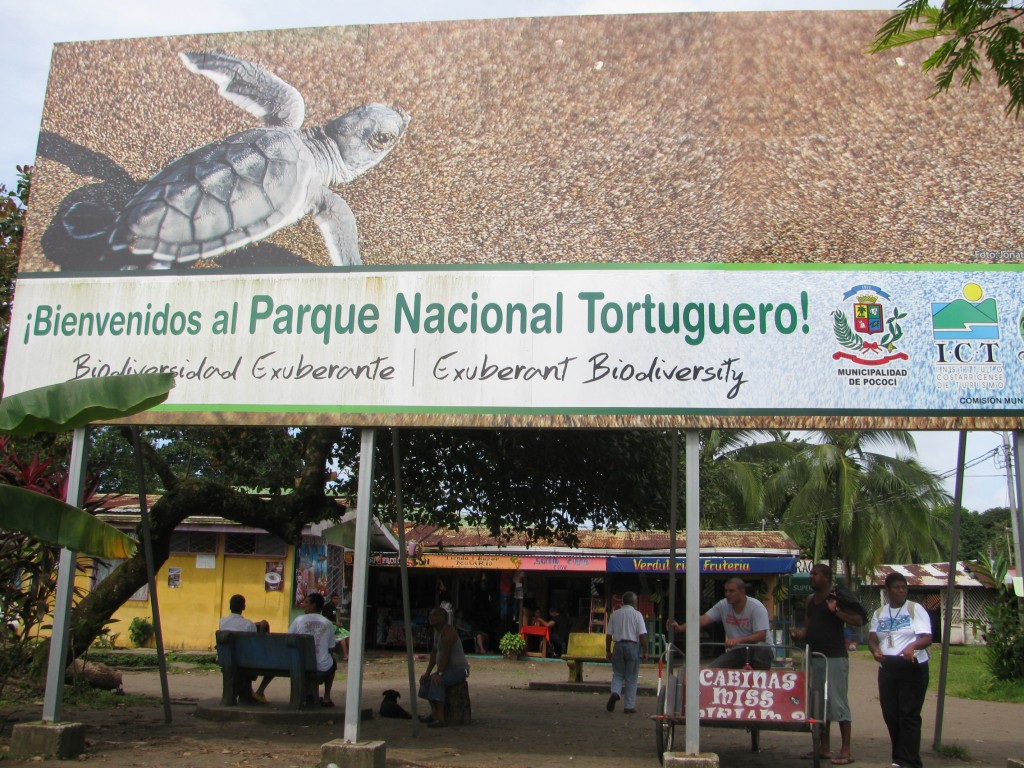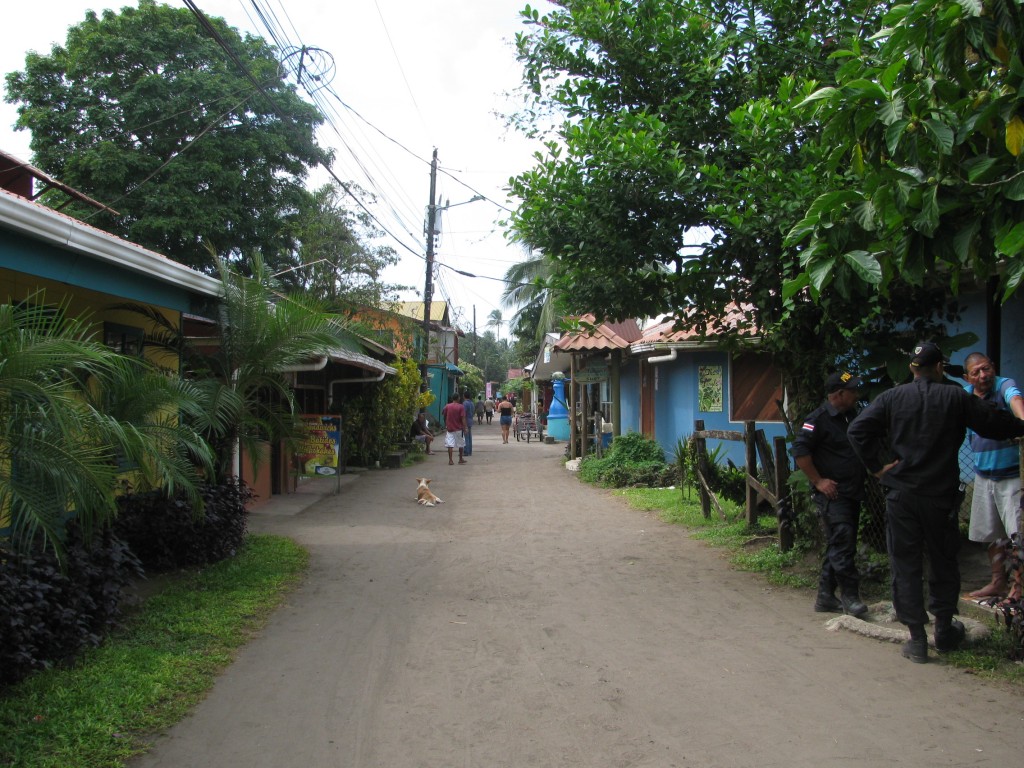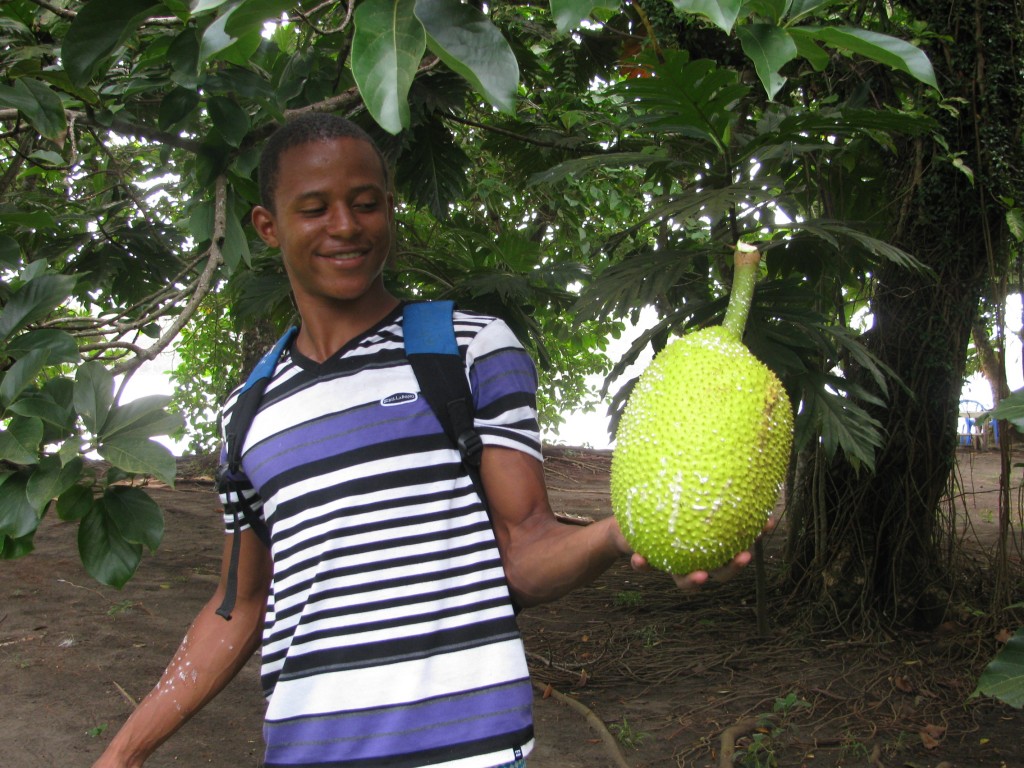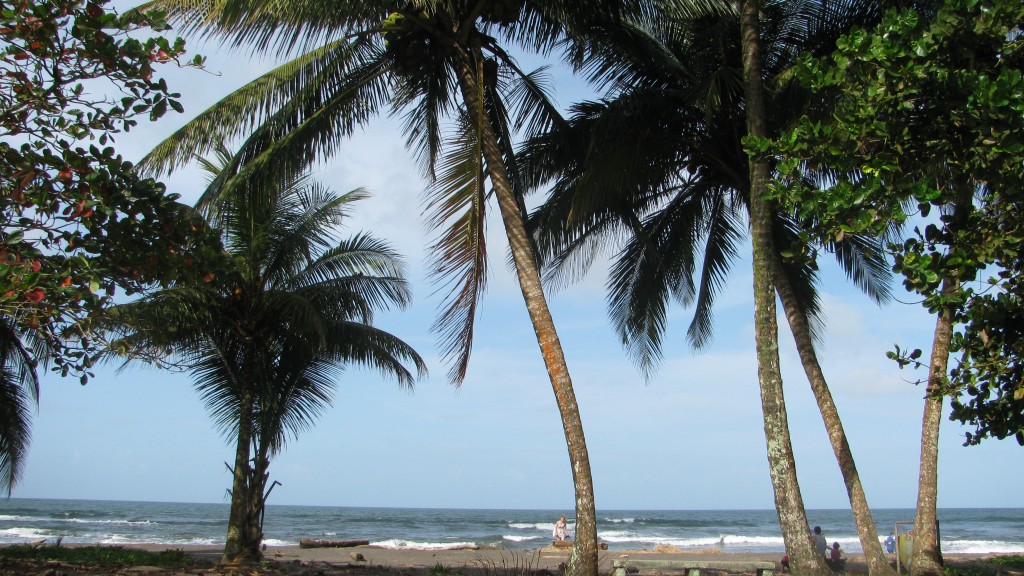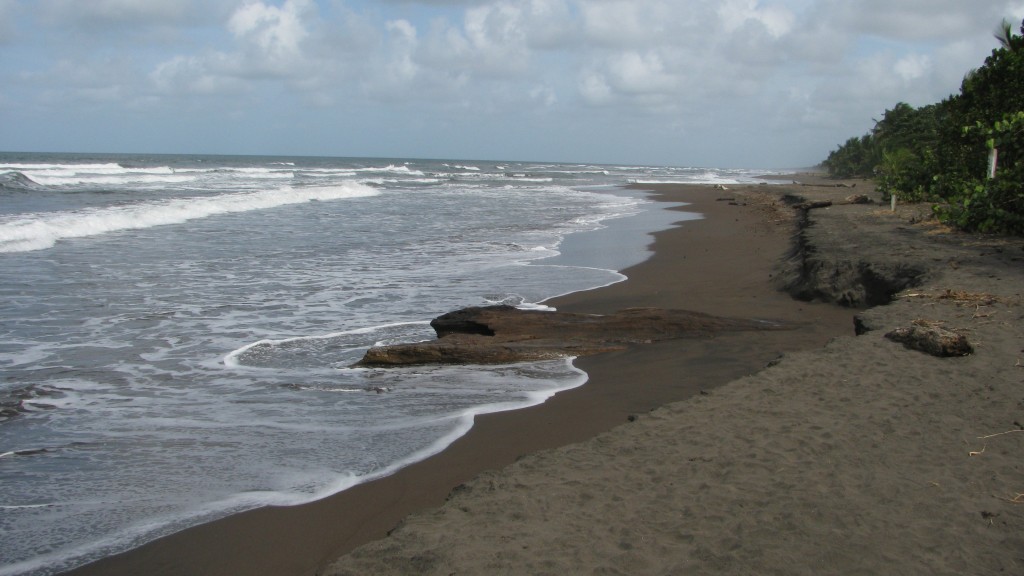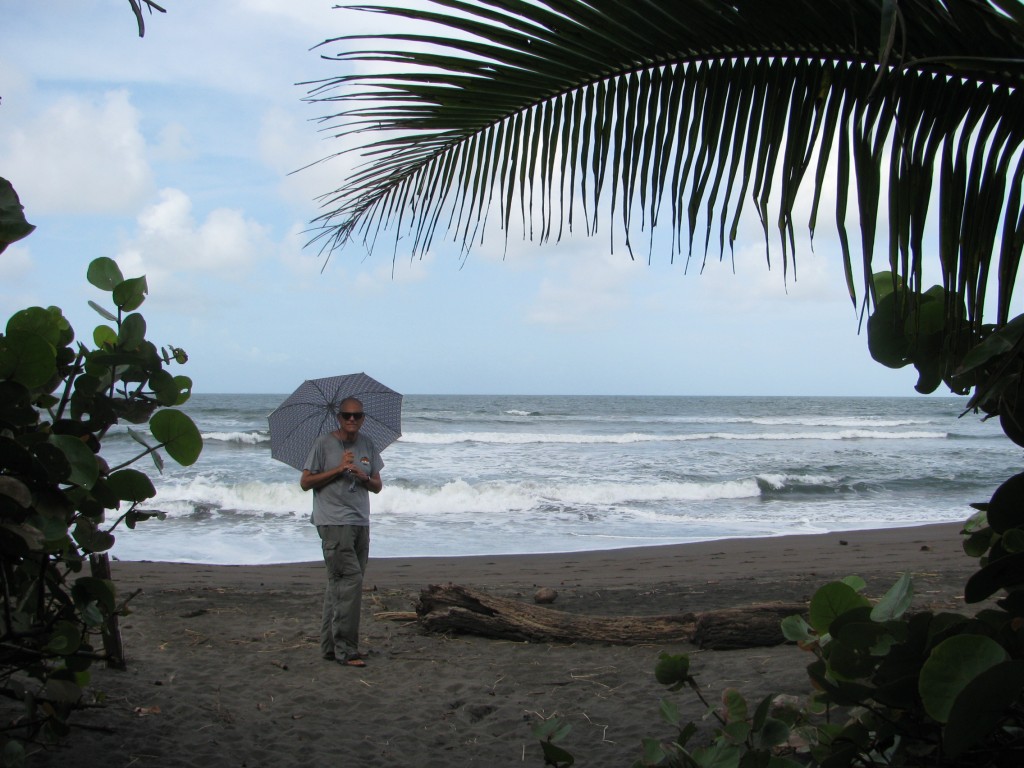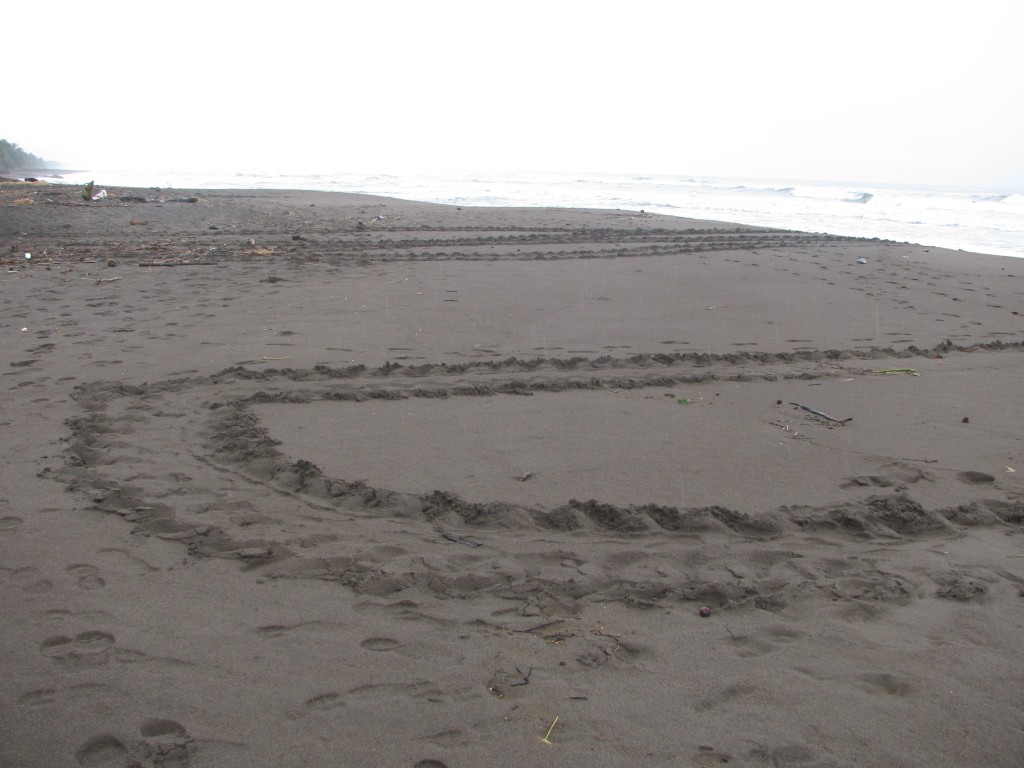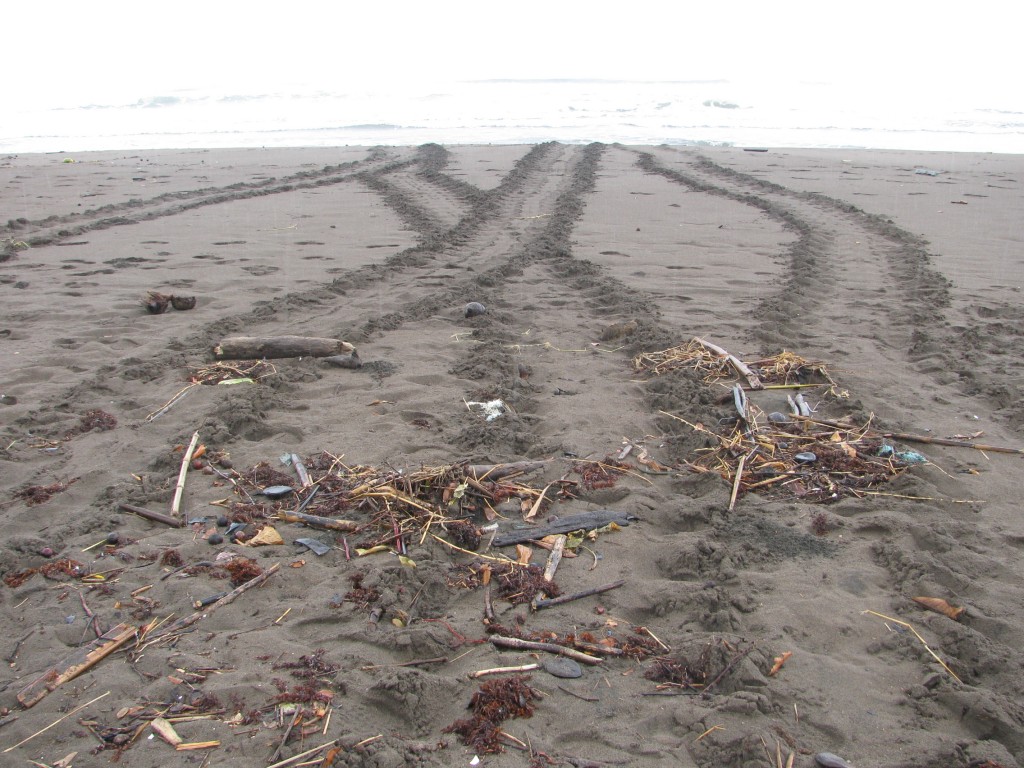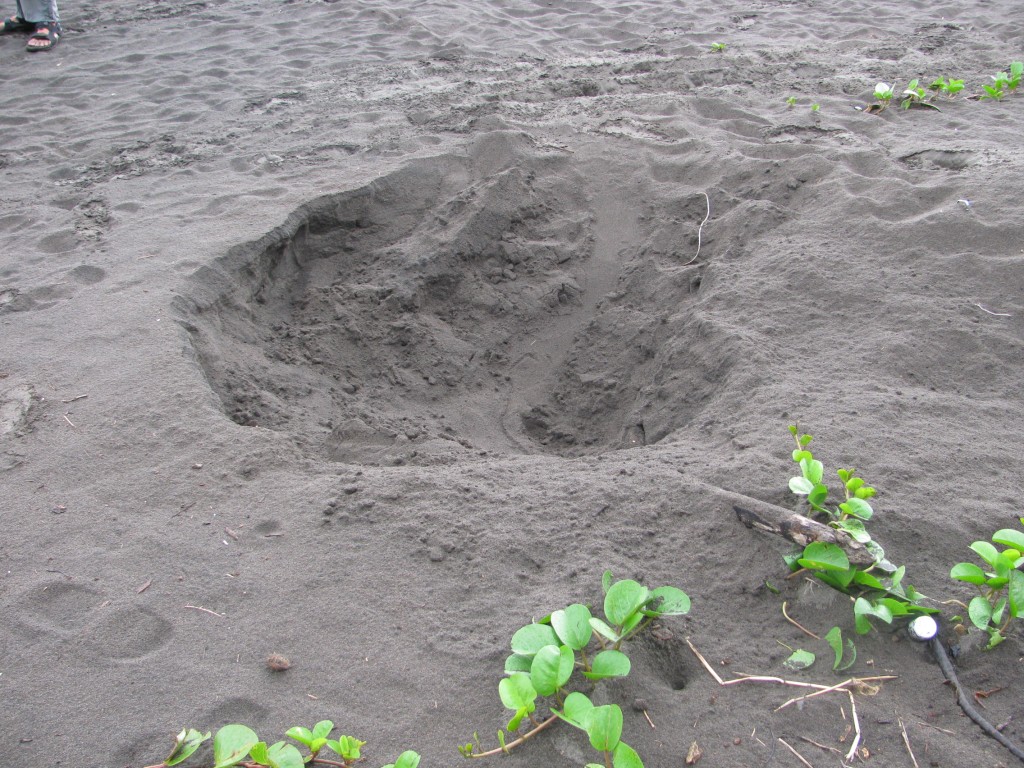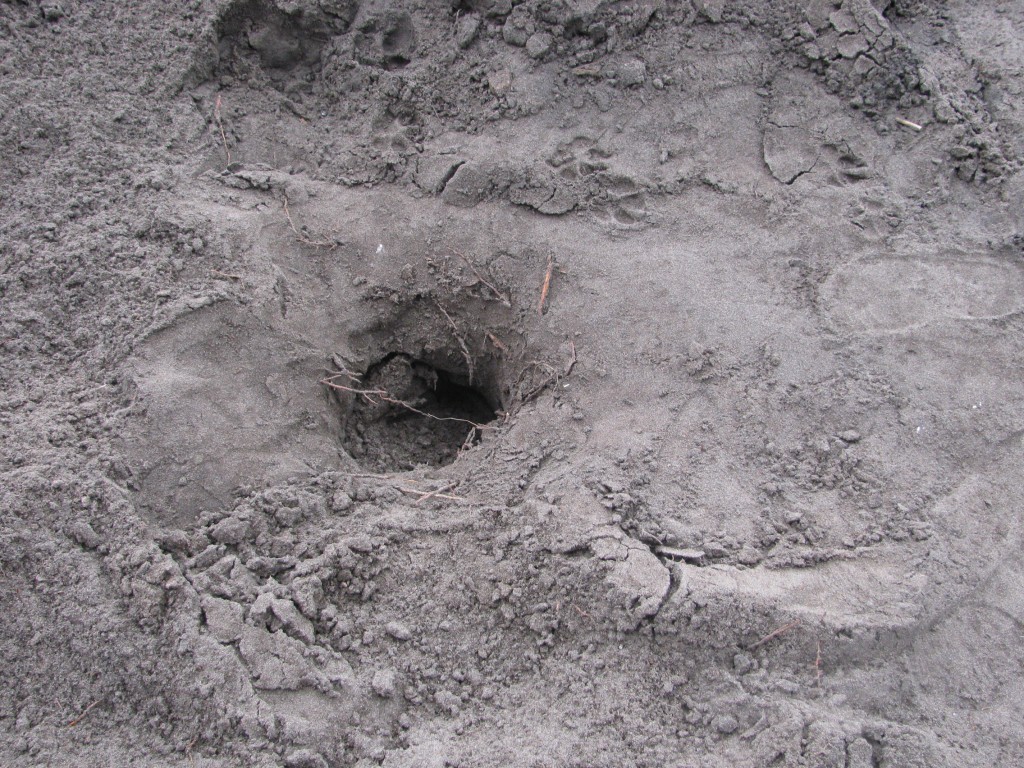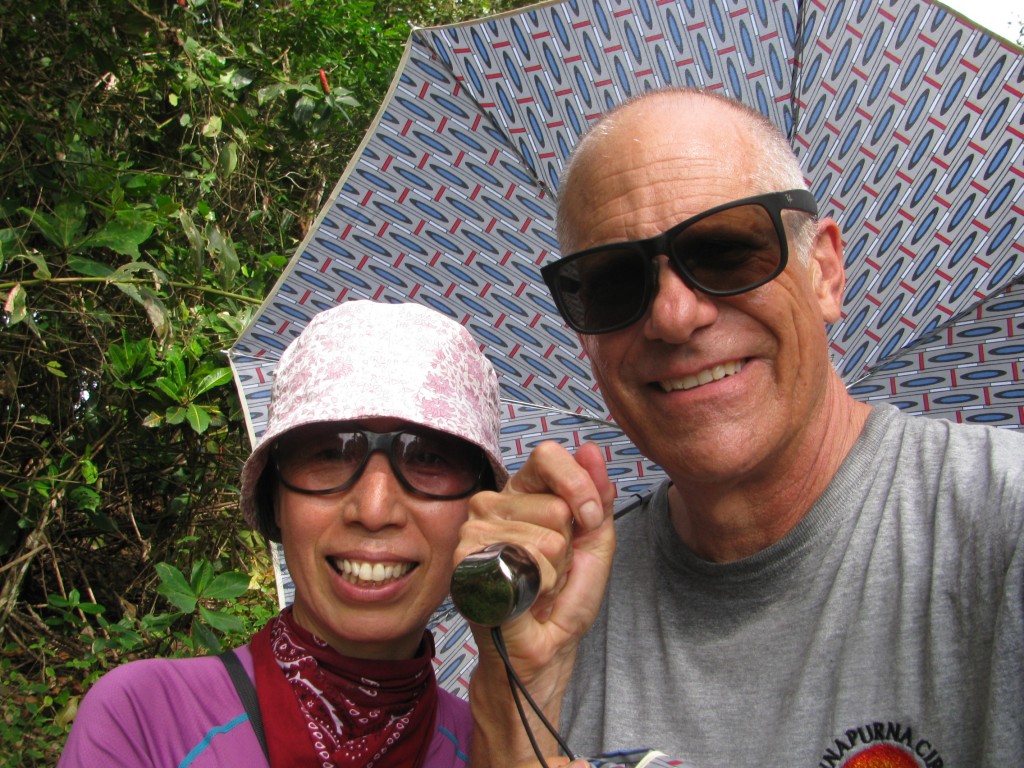Each year, about 40,000 turtles, mostly greens, lay their eggs on the beaches around Tortuguero. I was told Tortuguero is the second largest newsting site in the world. We did what most people do. We went there one day, checked out the turtles making their nests and laying their eggs, spent the night, and left in the morning. Some people hang around. It’s a perfectly nice Caribbean tourist beach place, tranquil with hardly any hard partiers. You can go on nature tours by canoe or electric outboard, or just chill. We did the turtle thing and went back.
To get there, you get yourself to Cariari, then to La Pavona. That’s the end of the road. From there, it’s about a 10km (I’d guess. It’s hard to say on a boat) ride down the river to Tortuguero. No road goes to there and there are no cars there.
We kinda got the ecotour on the way there. The public boat wasn’t leaving for a couple of hours, so we cadged a ride with a group of about 20 year olds who were being taken there by their leader to do something eco with the turtles. They had a spotter who pointed out a lot of things we wouldn’t have seen ourselves and the public boat drivers wouldn’t bother to stop for.
Here’s where we started and what we looked like.
This is what much of the river looks like.
Here’s caiman. They are like crocodiles but not so aggressive or dangerous. Still, you probably don’t want to go swimming in this river. There are crocs, too.
Here’s an iguana.
Here’s the only good picture we have of a toucan.
After about an hour, you get there.
The town looks like this.
This guy is selling breadfruit.
The beach looks like this. Typical.
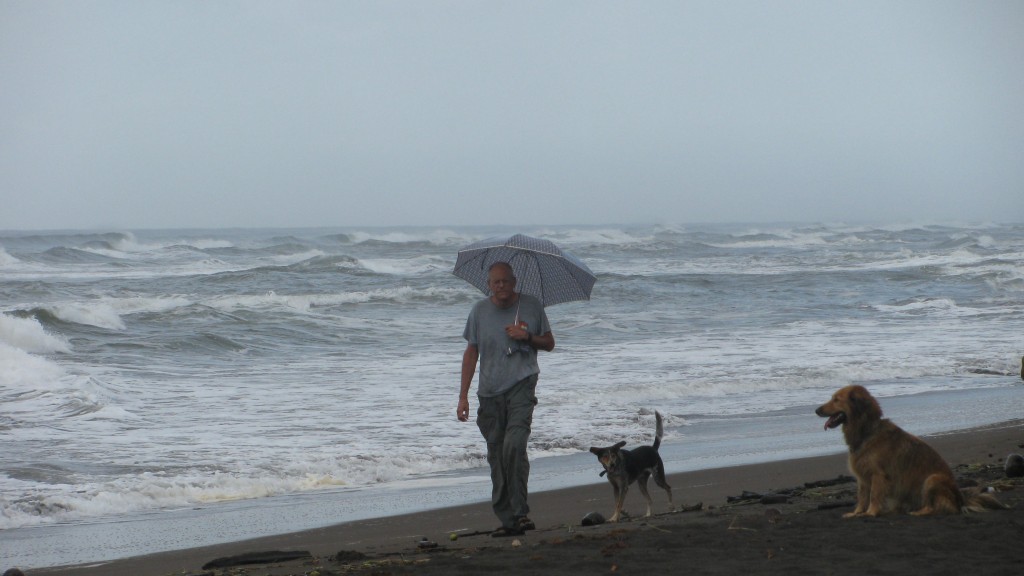 The turtles start coming up around sundown and might come up any time during the night. Sometimes they don’t return to the sea till after morning light. Sometimes they change their minds, turn around, and head back.
The turtles start coming up around sundown and might come up any time during the night. Sometimes they don’t return to the sea till after morning light. Sometimes they change their minds, turn around, and head back.
Mostly, they come up, do their thing which takes about an hour, and go back the way they came.
They clear the area, and make a shallow pit to lay their eggs.
Then they lay them, leaving one to four on top so the predators think they already got the prize.
Then they dig a smaller deep hole. They hope this leads predators to think maybe that’s the real nest.
Then they go back. They lay eggs every two or three years for up to 150 years. The turtle watching groups are more restricted than anywhere else I’ve been. You can only watch for several 5 minute periods. I remember in Malaysia in 1999, I was left on a beach and some teenagers took me to the sites and we watched all we wanted all night. That was a different place in a different time. Shoot, you could buy turtle eggs, and turtle meat was one of the most common and cheapest meats there. You can’t have either in Costa Rica. Poaching turtle will get you six years in the clink, and I was told tey enforce every minute of it. During our 5 minute periods, we watched nest making, eggs being laid, and one turtle heading back to the water. No photography is allowed because someone might use a flash, and that’s prohibited.
That’s the story, morning glory. We’re headed for the southern Pacific Coast with about five days left on our car rental. Talk to you later.

